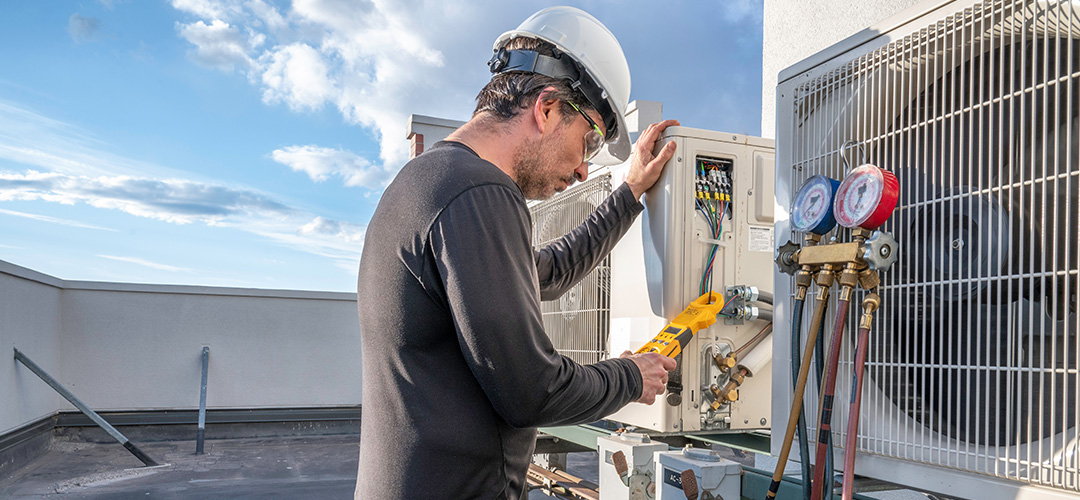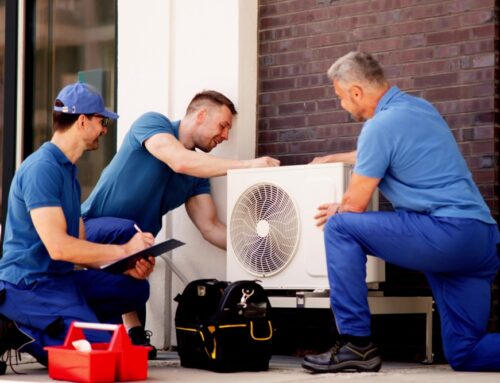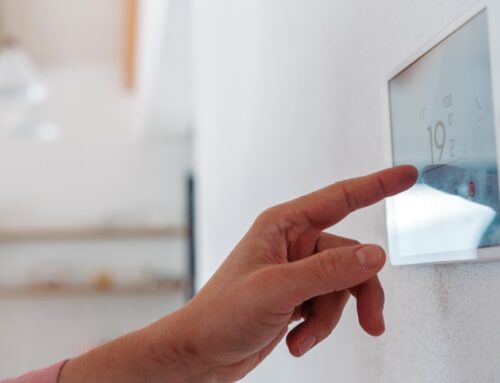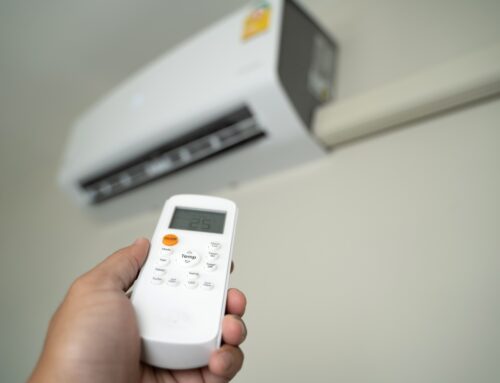In the world of commercial air conditioning, understanding the ROI of energy-efficient systems is more than just a financial consideration—it’s a step towards smarter business operations and environmental responsibility. For contractors navigating the HVAC landscape, energy-efficient AC systems present a compelling opportunity to reduce AC operational costs and elevate the bottom line. Investing in these systems not only slashes energy bills but also opens doors to tax incentives and rebates, enhancing the overall HVAC ROI.
As industry leaders, contractors are in a unique position to champion these advancements, transforming traditional challenges into triumphs with the right tools and guidance. Dive with us at Chills AC into how embracing AC energy efficiency can redefine success and sustainability in your projects.
The Financial Impact of Energy Efficiency
Lowering AC Operational Costs
Reducing AC operational costs is a primary advantage of energy-efficient systems. For contractors, understanding this cost-saving potential is key to making informed decisions. Energy-efficient air conditioners consume less power, translating to significant reductions in monthly energy bills. This is particularly impactful in large commercial spaces where AC units run continuously. Beyond immediate savings, these systems often require less frequent maintenance and have longer lifespans, further lowering operational expenses.
Consider the example of a commercial building with outdated AC units. By switching to energy-efficient models, the building owner might see a reduction in energy use by up to 30%, leading to substantial yearly savings. Additionally, the reduced strain on the system can mean fewer repairs, translating directly into cost savings. Contractors who emphasize these benefits can not only improve their clients’ bottom lines but also strengthen their reputation as forward-thinking professionals committed to sustainability.
Long-term Energy Savings
Energy-efficient air conditioners offer substantial long-term savings that extend well beyond initial cost reductions. Contractors can champion these savings by highlighting how efficient systems lower overall energy consumption over time. This not only benefits the bottom line but also contributes to a more sustainable business model. For instance, replacing older units with high-efficiency models can lead to a 20-40% reduction in energy consumption annually.
These savings accumulate, providing a significant return on investment over the system’s lifespan. Additionally, with advancements in technology, newer models often come with smart features that optimize energy use based on occupancy and weather conditions. This means even further savings without sacrificing comfort. Contractors who focus on these long-term benefits can help clients see the broader picture, making energy-efficient upgrades not just a smart financial choice, but a strategic move towards sustainable business practices.
Calculating HVAC ROI
Calculating HVAC ROI is essential for contractors to demonstrate the tangible benefits of energy-efficient systems. The return on investment is determined by comparing the cost savings in energy bills and maintenance against the initial expenditure on the new system. This involves analyzing factors such as energy consumption, unit efficiency, and operational costs. For instance, if a facility’s energy-efficient AC reduces energy costs by $5,000 annually and requires $2,000 less in maintenance, the savings offset the initial investment in a few years.
Contractors can utilize HVAC ROI calculators or software to estimate these figures accurately. By presenting these calculations to clients, contractors can effectively convey the financial advantages of upgrading to energy-efficient systems. This approach not only helps in decision-making but also builds trust, positioning contractors as knowledgeable advisors. Clients can see the potential for savings and sustainability, turning an upfront expense into a profitable long-term investment.
Environmental Benefits of Energy-Efficient Systems
Reducing Carbon Footprint
Adopting energy-efficient commercial air conditioners plays a crucial role in reducing a business’s carbon footprint. These systems require less energy to operate, leading to decreased greenhouse gas emissions. For contractors, this is an opportunity to align with eco-conscious clients who prioritize sustainability. By upgrading to energy-efficient units, businesses can significantly lower their environmental impact.
Consider a scenario where a company replaces its outdated AC units with modern, energy-efficient models. The reduction in energy consumption directly correlates to fewer emissions from power plants, contributing to cleaner air and a healthier planet. Additionally, many energy-efficient systems use refrigerants with lower global warming potential, further diminishing their environmental impact.
Contractors who emphasize these environmental benefits can attract clients seeking to enhance their corporate responsibility. By promoting reduced carbon footprints, contractors not only support a greener future but also help clients meet regulatory requirements and achieve sustainability goals. This approach reinforces the value of energy efficiency beyond mere cost savings.
Enhancing Sustainability Goals
Energy-efficient air conditioners are pivotal in helping businesses meet and enhance their sustainability goals. For contractors, advocating for such systems reinforces their role as leaders in promoting eco-friendly practices. These systems contribute to sustainability by minimizing energy consumption, reducing reliance on fossil fuels, and lowering greenhouse gas emissions.
For example, companies committed to environmental stewardship can leverage energy-efficient AC units to demonstrate tangible progress in reducing their overall environmental impact. This shift not only aligns with global sustainability initiatives but also resonates with stakeholders who value corporate responsibility.
Furthermore, integrating energy-efficient systems can enhance a business’s reputation and appeal to eco-conscious consumers and investors. Contractors can guide clients in incorporating these systems as part of broader sustainability strategies, ensuring compliance with environmental standards and contributing to certifications like LEED. By adopting energy-efficient technologies, businesses not only achieve immediate environmental benefits but also position themselves as pioneers in the shift towards a sustainable future.
Maintenance and Longevity Advantages
Decreasing Maintenance Expenses
Energy-efficient air conditioning systems are designed with advanced technology that often requires less maintenance compared to traditional units. For contractors, this translates into a compelling selling point for clients looking to reduce ongoing operational costs. These systems typically feature improved components and smarter diagnostics, which help in proactively identifying and solving issues before they escalate into costly repairs.
For instance, energy-efficient models often incorporate features like variable-speed motors, which not only enhance energy savings but also minimize wear and tear on the system. This leads to fewer breakdowns and lower maintenance costs over the system’s lifespan. By reducing the frequency and severity of repairs, businesses can allocate their budget more effectively, investing in other areas of growth.
Contractors who highlight the decreased maintenance expenses of energy-efficient systems can provide clients with a clearer understanding of the long-term financial benefits. This approach strengthens their position as trusted advisors, helping clients make informed decisions that improve both efficiency and cost-effectiveness.
Extending Equipment Lifespan
Investing in energy-efficient air conditioning systems can significantly extend the lifespan of the equipment. These systems are engineered to operate under optimal conditions, reducing the wear and tear typically associated with older, less efficient models. For contractors, promoting this longevity aspect is crucial in appealing to clients who seek long-term value.
Energy-efficient units often include features such as improved heat exchangers and advanced compressors, which contribute to smoother operation and less mechanical strain. This means that the systems can function effectively for longer periods, delaying the need for costly replacements. Moreover, by reducing operational stress, these AC units maintain their performance levels over time, ensuring consistent comfort and efficiency.
By extending equipment lifespan, businesses can defer capital expenditures associated with purchasing new systems. Contractors who emphasize this benefit can help clients understand the economic advantage of transitioning to energy-efficient models, thereby enhancing customer satisfaction and fostering lasting business relationships. This focus on durability and reliability further positions contractors as forward-thinking partners in sustainable building practices.
Incentives and Rebates for Businesses
Navigating Tax Incentives
Navigating tax incentives is a critical step for businesses investing in energy-efficient air conditioning systems. These incentives can significantly offset the initial costs, making energy-efficient upgrades more financially appealing. For contractors, understanding and communicating these benefits is essential in guiding clients through the investment process.
Tax incentives for energy efficiency often include deductions, credits, or accelerated depreciation options. For instance, the Energy Policy Act provides deductions for businesses that achieve specific energy savings in their HVAC systems. By leveraging these incentives, businesses can reduce their taxable income, directly impacting their bottom line.
Contractors can play a pivotal role by keeping abreast of available incentives and informing clients about how to qualify for them. This involves understanding both federal and state programs that may apply. By offering expertise in this area, contractors not only enhance their value proposition but also empower clients to make informed decisions that align with their financial and environmental objectives.
Exploring Available Rebates
Exploring available rebates is an effective way for businesses to further reduce the costs associated with upgrading to energy-efficient air conditioning systems. These rebates, often offered by utility companies or government programs, provide financial incentives to encourage the adoption of eco-friendly technologies. For contractors, understanding these rebates is crucial in assisting clients to maximize their savings.
Rebate programs typically vary by region and provider, and they may cover a portion of the purchase or installation costs of qualifying energy-efficient systems. For example, some utility companies offer rebates based on the efficiency ratings of the installed equipment, which can significantly lower upfront expenses.
Contractors can add value by researching and identifying available rebates that align with their clients’ projects. By helping clients apply for these rebates, contractors not only demonstrate expertise but also build trust and satisfaction. This proactive approach can facilitate smoother project planning and execution, ensuring clients reap the full financial benefits of their energy-efficient investments.
Making the Investment Decision
Assessing ROI for Your Business
Assessing the return on investment (ROI) for energy-efficient air conditioning systems is essential for businesses considering upgrading their HVAC infrastructure. For contractors, guiding clients through this assessment can clarify the long-term financial benefits and facilitate informed decision-making.
To accurately assess HVAC ROI, businesses should evaluate several factors: upfront costs, potential energy savings, maintenance savings, tax incentives, and available rebates. By comparing these variables, businesses can estimate the payback period and ongoing financial benefits over the system’s lifecycle. For instance, a detailed ROI analysis might reveal that an initial investment is recouped in energy savings within three to five years.
Contractors can assist clients by providing tools or resources to perform these calculations and by offering expert insights into realistic energy savings and cost expectations. This support helps clients see the broader picture of financial and environmental benefits, empowering them to make strategic, sustainable investments that enhance operational efficiency and cost-effectiveness.
Comparing Traditional vs. Energy-Efficient Systems
When making an investment decision, comparing traditional air conditioning systems with energy-efficient models is crucial. Contractors should help clients understand the differences in performance, cost, and long-term benefits between these systems. Traditional units, while often cheaper upfront, typically consume more energy, resulting in higher operational costs over time. They may also require more frequent maintenance, increasing their overall lifecycle costs.
In contrast, energy-efficient systems, though initially more expensive, offer significant savings on energy bills and reduced maintenance expenses. Their advanced technology allows for optimized performance, which translates into lower consumption and extended equipment lifespan. This efficiency often qualifies them for rebates and tax incentives, further offsetting the initial investment.
By clearly outlining these contrasts, contractors can aid clients in seeing the broader financial and environmental advantages of energy-efficient systems. This comparison facilitates informed decision-making, showcasing energy-efficient solutions as a strategic and sustainable choice for modern businesses committed to reducing costs and enhancing their environmental impact. Let us help you and call us today!





